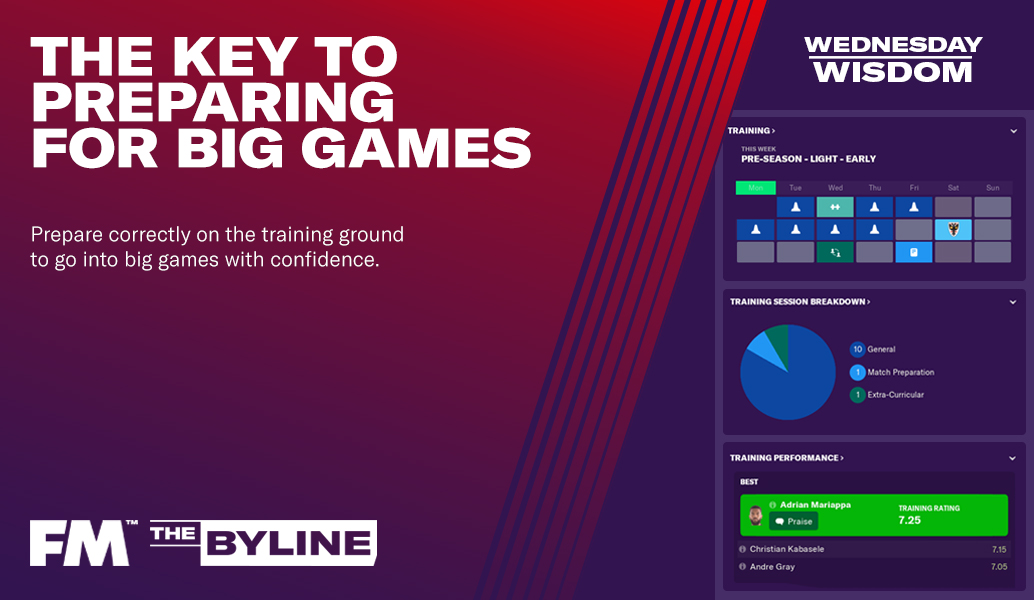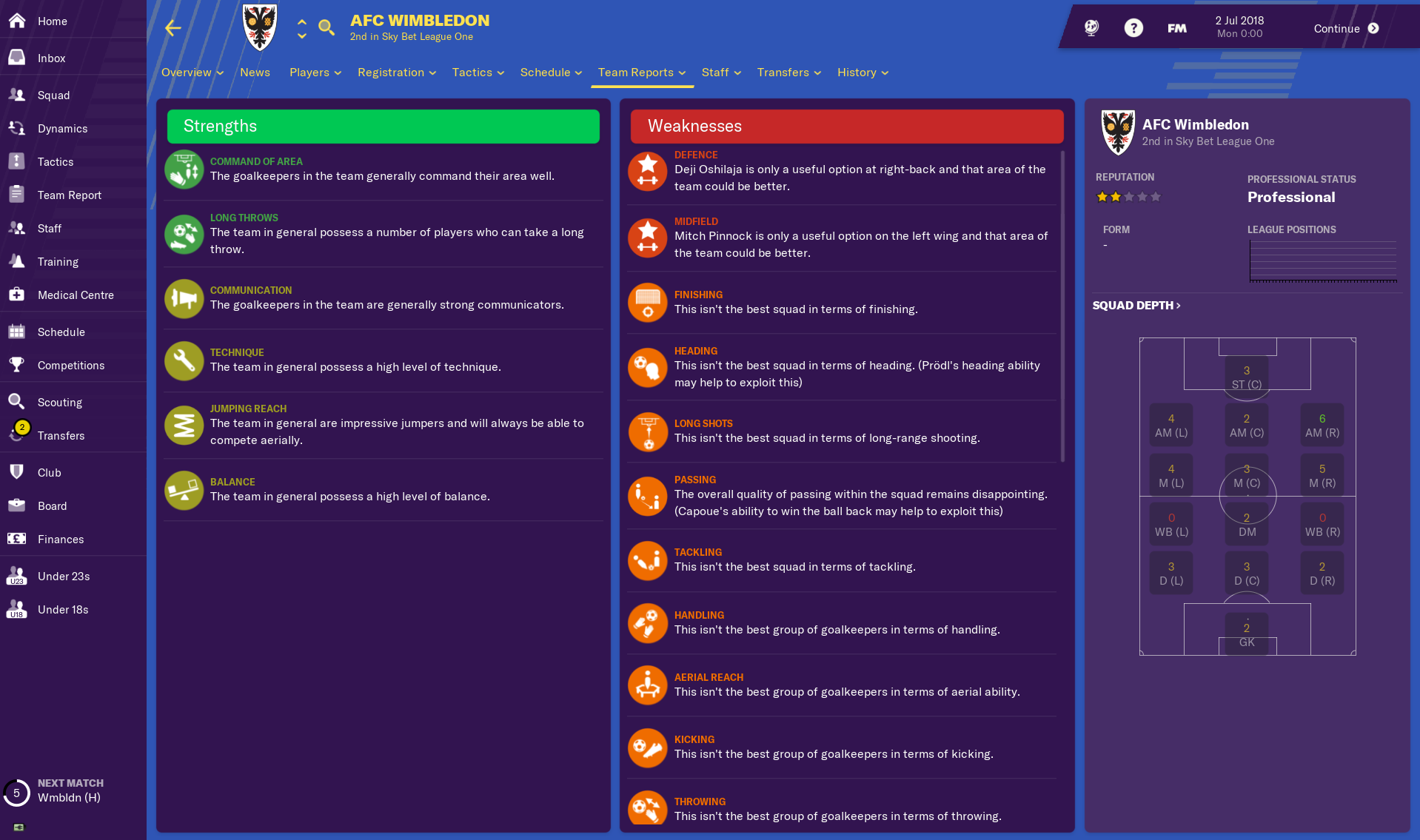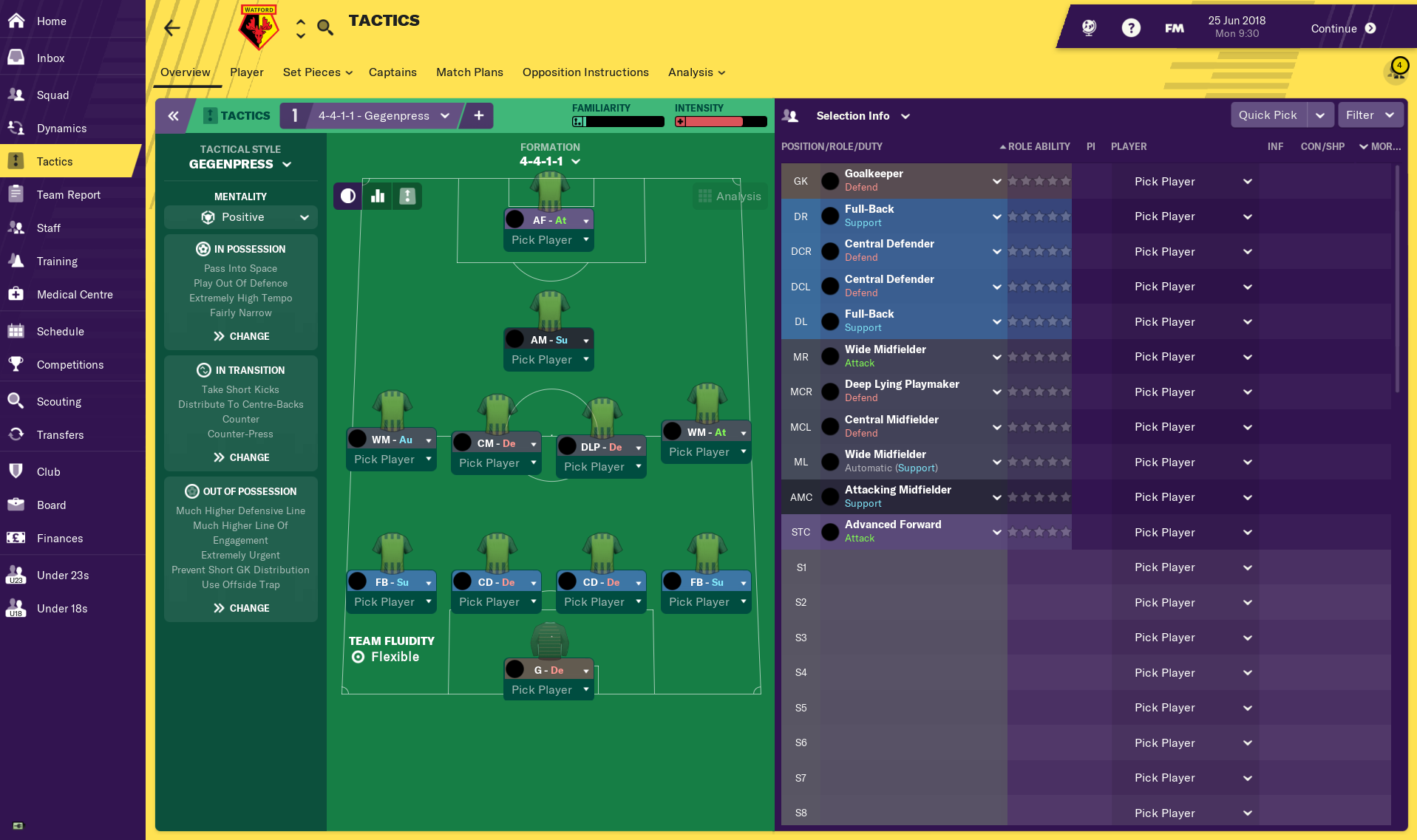A guide to match preparation | Wednesday Wisdom
This week's wisdom is being spread by @DazzaFM who has focused on match preparation. Failure to prepare is preparing to fail…

Part of the beauty of Football Manager is the fact that you can make it as in-depth as you want it to be. Whether that’s planning out every training session for your squad or just taking charge on match days, you’re able to extract as much or as little from the game as you want. Regardless of how much time you spend with your squad during the week, something that’s definitely worth taking your time to explore is the Match Preparation aspect of the game. Taking five or 10 minutes to analyse your opposition and find their potential weaknesses can be the difference between success and failure on matchday.
Every team you come up against has weaknesses, it's up to you to spot them and work out how to go about using them to your advantage.
First things first. Send one of your scouts to look at the opposition and send a team report back to you as soon as possible. This will give you some basic facts on your opponent that you can work from. Let’s take a look at the following example:
Strengths
Straight off the bat, we can see their defence is strong, set up as a solid back four. Knowing they're stronger at the back, means we may need to be more creative going forward. We are the favourites for this fixture so they may look to park the bus and play for a draw. Patient build-up play will be key here.
One more thing from the list that catches my attention is that their corner takers seem to have quality. I’ll need to put an extra emphasis on tight marking on their dangerous players from set pieces.
Weaknesses
The more important section, in my opinion, is the weaknesses column. We can clearly see from this early stage that they’re lacking in key areas.
For example, their work rate is very poor, this tells me we need to keep the ball for long periods and look to slowly wear them out over the course of the game. Keeping the ball shouldn’t be too difficult as their tackling ability is poor. Marking is another point that’s noted as being below par, so playing for set pieces and floating some crosses in could give us, and our strikers, some chances.
The report has given some great feedback, making notes based on the advice you’re given will certainly give you a slight advantage in trying to get those important three points.
You don't want to attack every single weakness on the list, though, as that would be too complicated for you and your players. Pick a couple that will play to your team’s strengths, without you having to significantly adjust your starting XI or tactical style.
Spotting the Key Players
Most teams you come up against will have one or two players that can change a game in their favour, especially at the top levels of the game. Go through the team’s squad list and look for who is having a stand-out season, this will indicate who you will want to tighten up on throughout the game.
If their striker has 15 goals and seven were headers you know you will need a defender who can compete with his heading attribute. If their winger has a bag of assists, it’s certainly worth showing him onto his weaker foot. It sounds simple, but these are effective moves to help your side get closer to a win.
Once again don't overcomplicate this, I’ve found that little tweaks have more of an impact than a huge overhaul.
Tactic vs Tactic
Take a look back at your opponent’s last two or three fixtures and look at their formation in each game as this could be an indicator of how they will set up against you. There’s always the risk that they’ll spring a surprise on you on the day of the game itself, but if there’s a pattern to their team selection or formation then it’s likely that they won’t deviate too far from that against you.
Every formation has strengths and weaknesses that you can use to try and turn the match in your favour. For example, 4-2-3-1 Wide is the most common formation that I’ve faced this season. This formation relies on width to create chances through crosses into the box and my full-backs need to be alive to this threat. To help them combat this, it may be worth selecting a wider defensive shape to stop the crosses at the source. You may also want to opt to counter when you’re in transition and have the ball to take advantage of that their team shape will be stretched after you’ve blocked the cross.
Match Analysis
Lastly, we head to my favourite area, the analysis section. This page gives you everything you want to know on how your opponent has held up in past games. You can view potentially key areas such as the player movement for goals, where their chances come from, positions they lose the ball most often. It can make a world of difference.
One area I always look at is their average position without the ball; why? If you notice a team who are narrow without the ball you can hit the wings hard and exploit that space.
That's how I go about my business leading up to a match. It doesn't take anywhere near as long as you might think, but spending these valuable minutes doing some homework before a game will give you an advantage in the 90 minutes. All that's left now is to pick the matchday squad you believe will bring home the three points.
There is no better feeling than winning a game and scoring goals from what you have set up in the week. Watching your team exploit your opponent’s weaknesses… what a feeling.



















